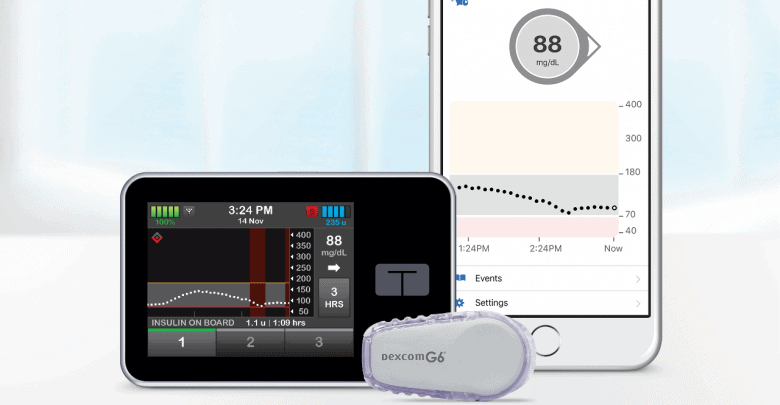New Non Fibrillating Insulin To Be a Game-Changer for Pump Users
Newly synthesized ‘glycoinsulin’ could revolutionize pump treatment because unlike current insulin analogs, it does not form inactive fibrils

You have probably never heard the term “insulin fibrillation” before or have even the slightest idea of what it means. But, if you are a type 1 pump user, odds are, this little-known chemical process affects you on a daily basis.
And that is why the announcement that a new insulin compound that does not fibrillate is such a big deal. This newly synthesized insulin analog called ‘glycoinsulin’ has shown the same glucose-lowering effects of native insulin but without the complications caused by fibrils.
Before we can understand the impact such a development could have on the diabetic community, we first need to gain a better understanding of what insulin fibrillation is and how it affects the usefulness of current insulin products on the market.
What Is Insulin Fibrillation?
While the concept might seem foreign, insulin fibrillation is actually the main cause of pump sites “going bad.”
Occlusions, site rotation, three-day reservoir changes, and even insulin allergies all owe their existence largely to the effects of fibrillation.
So what is it?
Insulin molecules naturally exist in a helical formation with multiple stabilizing connections, resembling a tight circle. But when insulin is exposed to heat or acid conditions, these molecules unfold and elongate. Once in an unfolded state, these elongated molecules tend to aggregate with one another, forming large clumps. These clumps are known as fibrils.
Not only are these large clumps of insulin more likely to clog your pump set and cause occlusions at your site, but they also become inactive and thus don’t have any effect on blood sugar. Worse still, these elongated fibrils also tend to trigger unwanted immune responses and can lead to site swelling and redness and potentially even insulin allergies.
But fibrils aren’t just a problem for insulin in our bodies.
Insulin vials or pens that are stored improperly and exposed to heat become inactive due to the effects of fibrillation.
Elongation of insulin molecules is also accelerated when insulin is transferred from inert glass vials into the plastic reservoir of a pump.
This is the reason you are supposed to change your reservoir out at least every three days.
While there are additional complicating factors that affect your pump site, the accumulation of fibrils is one of the main reasons you need to change your site every three days as well. It is also a driving factor behind the importance of site rotation.
How Does Fibrillation Affect Current Insulin Options?
The effects of fibrillation have been well documented in human and synthetic insulins for some time. And manufacturers and scientists are always balancing its effects with the need to produce faster-acting, more precise insulins.
For instance, insulin lispro, frequently sold as Humalog, utilizes hexameric stabilized insulin molecules that work much faster than traditional options. But, that same molecule shape that expediates utilization by the body is also more likely than normal human insulin to aggregate into fibrils.
And aspart and glulisine insulins aren’t much better.
To counteract fibrillation, manufacturers add preservatives to their insulins. While these tend to be powerful in fending off fibrillation under the right circumstances, they do not stop the process altogether. Worse still, it is possible to have a negative reaction to these preservatives and they could be another driving force behind insulin allergies and site reactions.
The Potential Benefits of this New Insulin Compound
An insulin that effectively lowers blood sugar that also doesn’t form fibrils or require preservatives has been the dream of scientists for decades. But any progress in reducing fibrillation was counteracted with lowered effectiveness for reducing blood sugar.
That is, until an international group of researchers based out of the Florey Institute of Neuroscience and Mental Health in Australia were able to synthesize the first non fibrillating form of human insulin that demonstrates the same blood sugar-lowering effects as current products on the market.
The insulin, known as glycoinsulin, has shown promising results in preclinical trials.
It appear to impede fibril formation under normal circumstances and it also remains stable and active even after being exposed to high temperatures.
This could have huge ramifications for pump users as well as any person on insulin treatment.
For those who rely on insulin pumps, a non fibrillating insulin would likely mean you could double the time between reservoir changes. It’s also likely that many patients would even find that their sites continued to work well beyond three days.
But more importantly, glycoinsulin could significantly reduce the occurrence of occlusions. Since pump users rely solely on the insulin being delivered to them through their infusion sets, any blockage within the pump system quickly drops the insulin levels in the body. If not caught early, this phenomenon typically leads to DKA. Reduced occurrences of occlusions would equate to a much lower risk of pump-failure driven hyperglycemia and DKA.
Even for those that don’t rely on pumps, having a more stable form of insulin could make everything from travel to power outages easier to deal with. As it is now, insulin in vials or pens can only be exposed to room temperature for a restricted amount of time before fibrillation occurs. And if it is exceptionally hot out, insulin can become completely inactivated relatively quickly.
A non fibrillating insulin, on the other hand, would be much more stable under these conditions, making the need for ice packs during travel a thing of the past. And in the case of an emergency or power outage, this type of insulin could theoretically be stored at room temperature for an extended period without the negative effects.
While human trials for glycoinsulin may still be a way off, every indication thus far is that this new insulin will be a game-changer for diabetes management. And it is certainly one product we will be keeping a close eye on.